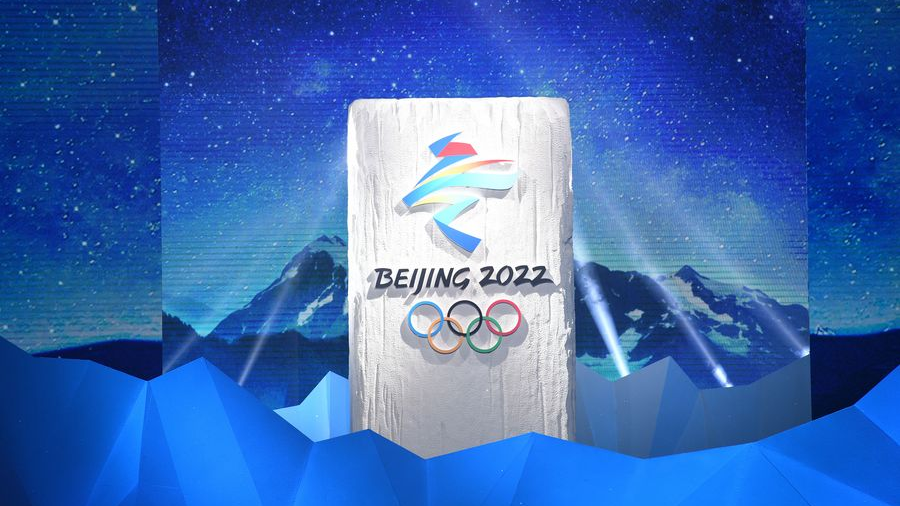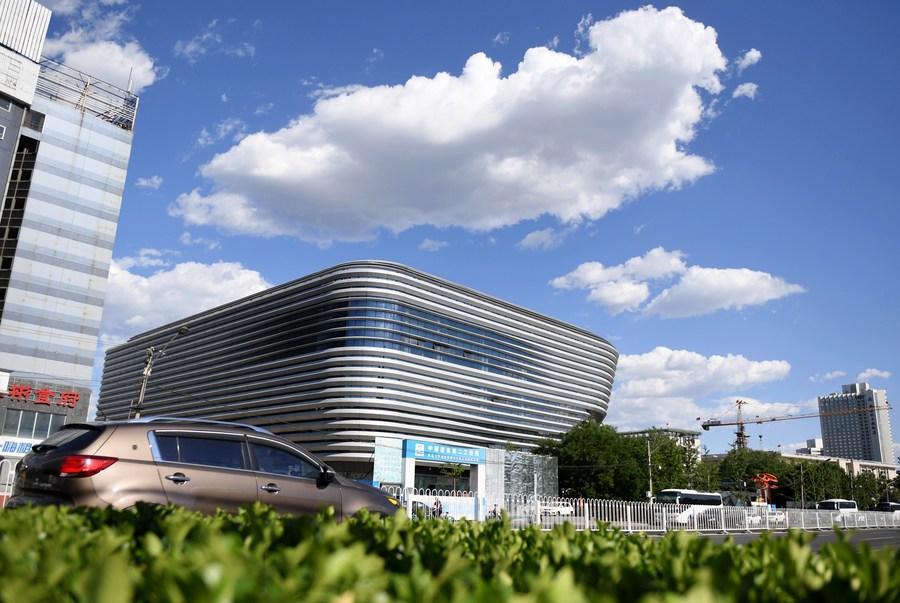
The emblem of Beijing 2022 Olympic Winter Games is unveiled during the enblem launch ceremony for the Beijing 2022 Olympic and Paralympic Winter Games in Bejing, capital of China, December 15, 2017. /Xinhua
The emblem of Beijing 2022 Olympic Winter Games is unveiled during the enblem launch ceremony for the Beijing 2022 Olympic and Paralympic Winter Games in Bejing, capital of China, December 15, 2017. /Xinhua
Editor's note: Alessandro Golombiewski Teixeira is a national Thousand Talent distinguished professor of public policy at the School of Public Policy and Management, Tsinghua University, and a professor of international business at Schwarzman College at Tsinghua. He is a former special economic advisor to the president of Brazil and former Brazilian minister of tourism, and minister of development, industry and foreign trade. He was also president of the World Investment Association. The article reflects the author's views, not necessarily those of CGTN.
China lit the Olympic flame for Beijing 2022 Winter Games last week, marking the start of the Beijing 2022 Winter Olympics, which will make Beijing the first "double Olympic city" – hosting both the Summer and Winter Olympics.
Chinese President Xi Jinping has proposed the four major concepts of "green, inclusive, open and clean," which has been praised by the International Olympic Committee (IOC) President Bach as setting a "new benchmark for the Olympic Games." The four concepts are used in every detail of the preparatory process.
While the global situation for the prevention and control of the COVID-19 pandemic remains severe and complex, China is committed to delivering on every promise made in its bid for the Winter Olympics, demonstrating extraordinary scientific and technological strength and excellent management capabilities in the preparations for the games.
The recent Tokyo Olympics provided a lesson for China that pandemic prevention measures are key to the ultimate success of the games. Even though there were no live spectators at the Tokyo Olympics, the coronavirus in Tokyo was still spreading in an explosive manner. The cumulative number of confirmed cases related to the Olympics reached 436, including a cluster of cases involving the Greek artistic swimming team. Currently, as vaccination rates rise and governments seek to ease the economic burden, countries that for months have tightly controlled the spread of COVID-19 are easing restrictions. However, China remains committed to its stringent and effective prevention and control policy.
In September, the Beijing 2022 Winter Olympic Organizing Committee published the policy of the pandemic prevention and control for the Beijing 2022 Winter Olympics and Winter Paralympics. In order to prevent the possible spread of the COVID-19 pandemic and ensure the safety of all participating parties, China decided not to sell tickets to overseas spectators, but only to those who meet the requirements and stay in the country. It released the first edition of its Pandemic Prevention Manual on October 25.

The exterior look of the "Ice Jar" comprehensive training center in Beijing, capital of China, May 27, 2020. /Xinhua
The exterior look of the "Ice Jar" comprehensive training center in Beijing, capital of China, May 27, 2020. /Xinhua
The preparations for the Beijing 2022 Winter Olympic Games and Winter Paralympic Games are being actively and orderly promoted. Based on its rich experience in pandemic prevention and hosting large events, China has further refined and improved its pandemic prevention measures and utilized the power of science and technology to achieve a "safe Winter Olympics."
In addition to the necessary vaccinations, nucleic acid testing, closed-loop management and other preventive measures, the Beijing Winter Olympics also utilizes AI infrared thermal imaging temperature measurement, intelligent service robots, millimeter wave security scanning equipment, intelligent access control, face recognition, 5G technology and other new technologies.
China's 5G development plays a leading role in the world. 5G helps the Beijing Winter Olympics achieve a good experience in viewing, live broadcasting, sports technology, and safety running of the games. For example, in terms of safety monitoring, 5G plus AI technology can realize real-time transmission and perception of athletes' physical functions, greatly shortening the time from the discovery of danger to rescue.
The Beijing Winter Olympics will be held in a green and low-carbon manner, in line with China's goal of reaching emission peak and carbon neutrality. As a major highlight of the low-carbon venues, the Beijing Winter Olympics proposed for the first time that 100 percent of the conventional power consumption needs of all venues would be met by renewable energy, and ensured the achievement of this goal by building green power supply projects and establishing green power access use mechanisms. At the same time, the ice venues of the games use carbon dioxide refrigerant, one of the most environmentally friendly and sustainable refrigerants with the advantages of high energy efficiency, good stability and uniform cooling.
A post-competition utilization plan for Olympic venues has been prepared. Accompanying the preparations will be increasingly convenient transportation and other infrastructure driving coordinated regional development. China has accelerated the creation of a sports and cultural tourism belt, driving people along the route to employment and income generation and leaving the host city with a long-term Olympic legacy.
China will not only fully demonstrate its strong comprehensive national leadership in fighting the pandemic and preparing and managing large events at the Winter Olympics, but will also show the world how to take the next step in developing its post-pandemic economy.
(If you want to contribute and have specific expertise, please contact us at opinions@cgtn.com.)

